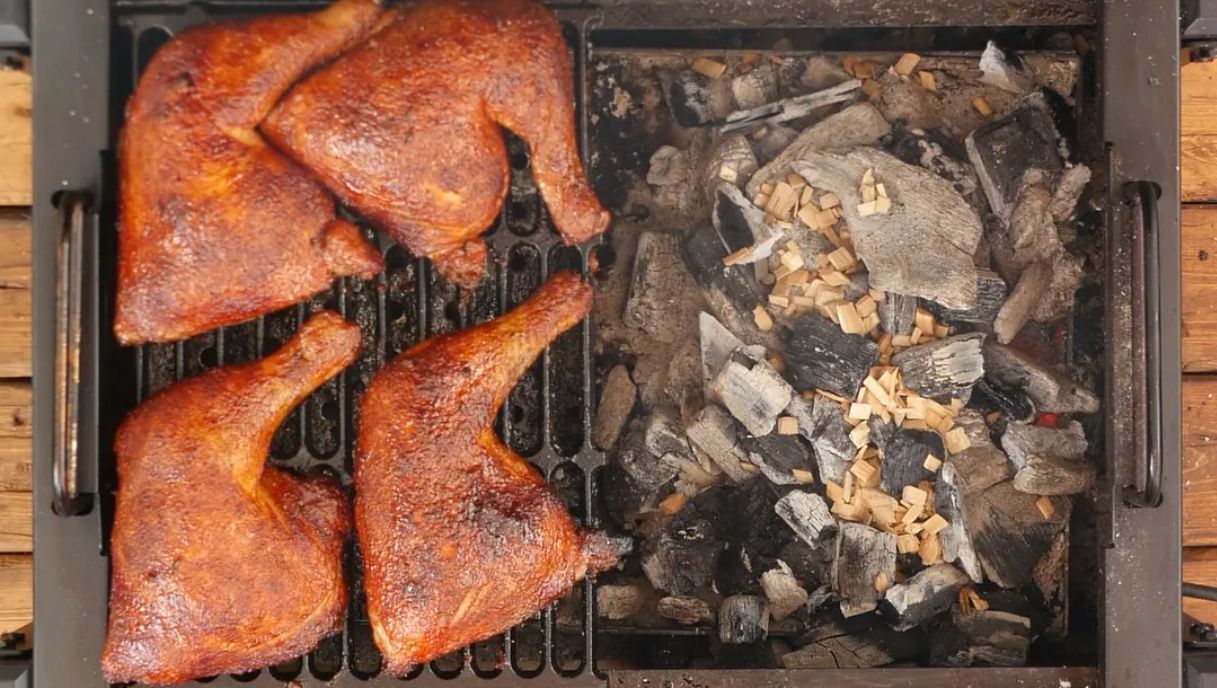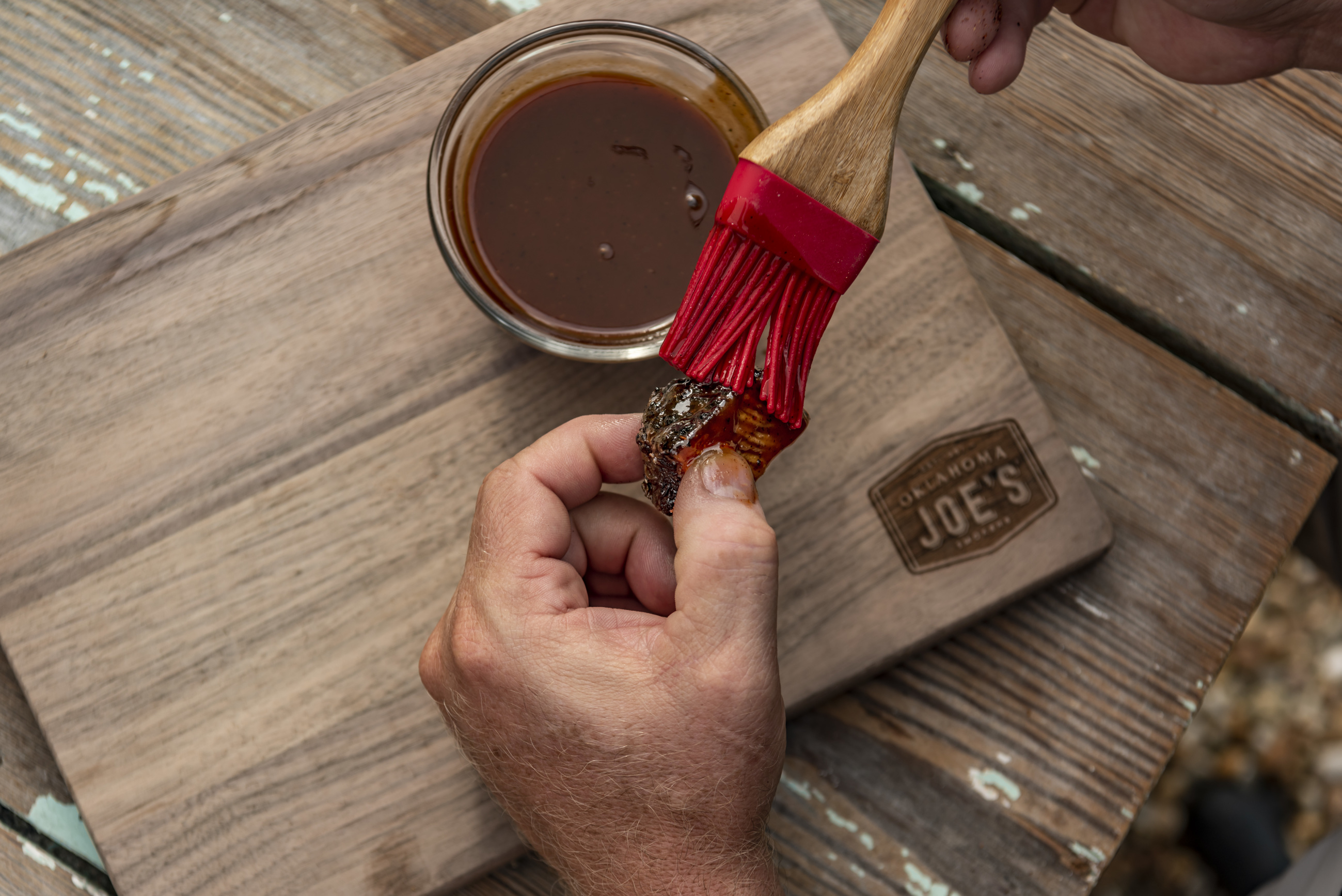How to Grill with Charcoal
Beginner
Charcoal grilling can be intimidating. Learn how simple it can be, from starting a charcoal grill to controlling the temperature and putting out the coals.
Admittedly, grilling over charcoal requires more effort and a little finesse. For anyone who has only cooked on a gas grill, charcoal grilling can be intimidating. While it’s not as easy as cooking with gas, charcoal imparts a unique flavor you can only get from a charcoal grill.
We'll walk you through starting a charcoal grill to controlling the temperature and putting out the coals. Learn more about the various fuel options and soon enough you'll be an expert on everything charcoal has to offer.
Instructions
List
Steps
Show Photos:
On
Off
Fire Starters
>
Fire starters are made from non-toxic flammable material and used to help start fires more quickly. First, you’ll arrange the charcoal briquettes or natural lumps in a pile at the center of your grill and insert one or two fire starters into the pile. Light the fire starters and wait 20 minutes for the charcoal to fully ignite. Once the charcoal is lit, arrange the lit coals using your BBQ tongs.
Charcoal Starter
>
A charcoal starter or charcoal chimney is a metal cylinder with a grate near the bottom, air vents on the sides and a handle that stays cool to the touch. Fill the charcoal starter with charcoal briquettes or natural lumps and place two folded newspapers underneath. Ignite the newspapers and wait 15 minutes. Using long sleeve BBQ gloves, grab the charcoal starter by the handle and dump the hot coals onto the charcoal grate.
Charcoal Lighter
>
Powered by propane, a charcoal lighter makes quick work of firing up your charcoal while keeping you an arm’s length away from the heat. Arrange the charcoal briquettes or natural lumps in your grill. Start the charcoal lighter following the manufacturer’s guidelines. Ignite for a minimum of 2 minutes, depending on the amount of charcoal. To light a larger bed of coals, engage the lighter for a couple more minutes until it is fully lit.
Hot TipIf the lighter is engaged for 2 minutes or longer, the flame hood will be very hot, and the tank will be very cold. You may want to wear gloves to protect your hands from burning or freezing.
Charcoal Set Up
>
There are several ways to arrange your charcoal for optimal heat management based on what you’re cooking. The most common arrangements are for direct, indirect and two-zone cooking.
1.
Direct – Charcoal is arranged in one even layer across the entire surface for high-heat searing. This method works well for steaks, burgers, hot dogs and chicken wings.
2.
Indirect – Charcoal is arranged in various configurations to create an indirect heat zone with low heat to slow roast whole chickens, turkeys and roasts. For example, placing coals on either side or lining them around the outer edge of the grates creates an indirect heat zone in the center of the grate. Piling them in the center of the grate leaves the outer edges available for indirect heat.
3.
Two-Zone – Charcoal is arranged with an even layer on one side of the grill and no coals on the other side. This arrangement gives you a direct heat side for grilling meats and an indirect heat side to cook vegetables at the same time.
Types of Charcoal
>
There are two primary types of charcoal; briquettes and natural lump.
>
Charcoal briquettes are compressed blocks of coal dust or charcoal, sawdust, wood chips, peat, or paper used for fuel and kindling to start a fire. Briquettes burn longer, maintain steady temperatures and cost less than natural lump charcoal.
>
Natural lump charcoal is made by slowly burning pieces of wood in the absence of oxygen until all the natural chemicals, sap and moisture are released from the wood. Natural Lump ignites faster, burns hotter and imparts more flavor.
Temperature Control
>
Charcoal grilling is much easier when you understand how to control the heat of the live coals. The most prominent factors in adjusting and maintaining your desired temperature are air flow and the height of the charcoal grate.
Air Flow – Adjust the intake damper and the chimney to control the air flow. Decrease vent openings to use minimum air flow for low temps around 225°F. Open the vents to get maximum air flow for higher temps around 500°F.
Charcoal Tray – If your grill is equipped with an adjustable charcoal tray, raise or lower its height to adjust for searing temps.
Using Wood
>
When grilling with charcoal, adding natural wood to your fuel gives you the ease of charcoal and the flavor of wood smoke. Using them together is a very effective way to generate both heat and flavor. Wood chips are basically wood scraps and shavings that generate more smoke for short cooking times. Wood chunks are fist-size pieces of wood that generate a steady supply of smoke for long cooking times. Learn all about smoking wood here.
Putting Out Coals
>
When you’re finished grilling, you’re not done with the grill until the fire is extinguished. First you need to fully close the intake damper and chimney to stop the air flow. It can take up to 1 hour for the coals to cool down, depending on how much unburned charcoal is left. When the coals are completely cool, remove the ash pan and dispose of the ashes in a metal trash can. You can reuse unburned charcoal for your next cook.



